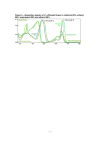Evaluation of Biologically Active Compounds from Calendula officinalis Flowers using Spectrophotometry
- PMID: 22540963
- PMCID: PMC3379952
- DOI: 10.1186/1752-153X-6-35
Evaluation of Biologically Active Compounds from Calendula officinalis Flowers using Spectrophotometry
Abstract
Background: This study aimed to quantify the active biological compounds in C. officinalis flowers. Based on the active principles and biological properties of marigolds flowers reported in the literature, we sought to obtain and characterize the molecular composition of extracts prepared using different solvents. The antioxidant capacities of extracts were assessed by using spectrophotometry to measure both absorbance of the colorimetric free radical scavenger 2,2-diphenyl-1-picrylhydrazyl (DPPH) as well as the total antioxidant potential, using the ferric reducing power (FRAP) assay.
Results: Spectrophotometric assays in the ultraviolet-visible (UV-VIS) region enabled identification and characterization of the full range of phenolic and flavonoids acids, and high-performance liquid chromatography (HPLC) was used to identify and quantify phenolic compounds (depending on the method of extraction). Methanol ensured more efficient extraction of flavonoids than the other solvents tested.Antioxidant activity in methanolic extracts was correlated with the polyphenol content.
Conclusions: The UV-VIS spectra of assimilator pigments (e.g. chlorophylls), polyphenols and flavonoids extracted from the C. officinalis flowers consisted in quantitative evaluation of compounds which absorb to wavelengths broader than 360 nm.
Figures
Similar articles
-
Phenolic compounds and antioxidant capacities of 10 common edible flowers from China.J Food Sci. 2014 Apr;79(4):C517-25. doi: 10.1111/1750-3841.12404. Epub 2014 Mar 12. J Food Sci. 2014. PMID: 24621197
-
Radical Scavenging and Antioxidant Activity of Anthyllis Vulneraria Leaves and Flowers.Molecules. 2018 Jul 7;23(7):1657. doi: 10.3390/molecules23071657. Molecules. 2018. PMID: 29986488 Free PMC article.
-
Effect of extraction solvents on the biomolecules and antioxidant properties of Scorzonera undulata (Asteraceae): Application of factorial design optimization phenolic extraction.Acta Sci Pol Technol Aliment. 2015 Oct-Dec;14(4):313-330. doi: 10.17306/J.AFS.2015.4.32. Acta Sci Pol Technol Aliment. 2015. PMID: 28068038
-
The study of polyphenolic compounds profile of some Rosmarinus officinalis L. extracts.Pak J Pharm Sci. 2016 Nov;29(6 Suppl):2355-2361. Pak J Pharm Sci. 2016. PMID: 28167478
-
Phenolic composition and antioxidant properties of some traditionally used medicinal plants affected by the extraction time and hydrolysis.Phytochem Anal. 2011 Mar-Apr;22(2):172-80. doi: 10.1002/pca.1264. Epub 2010 Sep 16. Phytochem Anal. 2011. PMID: 20848396
Cited by
-
Endophytic actinobacteria from Mentha longifolia and Lonicera nummulariifolia: a novel source against antibiotic resistance.BMC Microbiol. 2025 Jun 25;25(1):365. doi: 10.1186/s12866-025-04089-y. BMC Microbiol. 2025. PMID: 40563081 Free PMC article.
-
Medicinal plants recommended by the world health organization: DNA barcode identification associated with chemical analyses guarantees their quality.PLoS One. 2015 May 15;10(5):e0127866. doi: 10.1371/journal.pone.0127866. eCollection 2015. PLoS One. 2015. PMID: 25978064 Free PMC article.
-
Design and optimization of a novel herbosomal-loaded PEG-poloxamer topical formulation for the treatment of cold injuries: a quality-by-design approach.Drug Deliv Transl Res. 2022 Nov;12(11):2793-2823. doi: 10.1007/s13346-022-01140-7. Epub 2022 Apr 21. Drug Deliv Transl Res. 2022. PMID: 35445943
-
Horsetail (Equisetum Arvense) as a Functional Filler for Natural Rubber Biocomposites.Materials (Basel). 2020 Jun 2;13(11):2526. doi: 10.3390/ma13112526. Materials (Basel). 2020. PMID: 32498274 Free PMC article.
-
Design of optimal solvent for extraction of bio-active ingredients from six varieties of Medicago sativa.Chem Cent J. 2012 Oct 26;6(1):123. doi: 10.1186/1752-153X-6-123. Chem Cent J. 2012. PMID: 23098128 Free PMC article.
References
-
- Calendula officinalis-L. (HTML) Plants For A Future (PFAF) http://www.pfaf.org/user/Plant.aspx?LatinName=Calendula+officinalis Retrieved 2011/11/04.
-
- Interactive Flora of NW Europe. Calendula officinalis. Retrieved 2011/08/12.
-
- National Institutes of Health. "Calendula" (HTML). Herbs and Supplements. U.S. National Library of Medicine; Retrieved 2011/10/19.
-
- Muley BP, Khadabadi SS, Banarase NB. Phytochemical Constituents and Pharmacological Activities of Calendula officinalis Linn (Asteraceae) Trop J Pharm Res. 2009;8:455–465.
LinkOut - more resources
Full Text Sources
Miscellaneous




